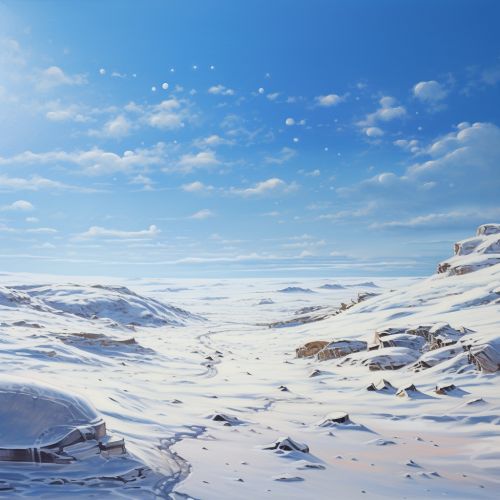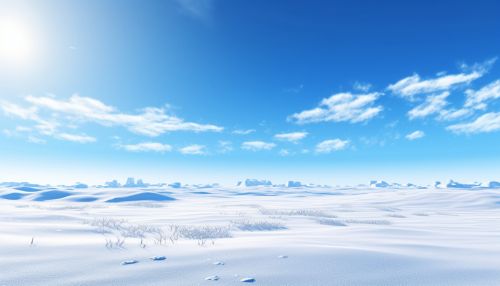Arctic
Geography
The Arctic is a polar region located at the northernmost part of the Earth. It consists of the Arctic Ocean and parts of Canada, Russia, Greenland, the United States, Norway, Sweden, Finland, and Iceland. The Arctic is known for its severe climate, with temperatures often dropping below freezing and the region being enveloped in darkness for much of the year due to the tilt of the Earth's axis.


Climate
The Arctic's climate is characterized by long, cold winters and short, cool summers. The region is known for its extreme conditions, with temperatures often dropping below -40 degrees Celsius in the winter. The Arctic is also known for its polar nights, periods of 24-hour darkness that occur in the winter, and midnight sun, periods of 24-hour daylight that occur in the summer.
Flora and Fauna
Despite the harsh climate, a variety of plants and animals have adapted to survive in the Arctic. The region is home to species such as the polar bear, Arctic fox, and snowy owl. The Arctic is also home to a variety of plant species, including lichens, mosses, and flowering plants, which have adapted to the harsh conditions by growing low to the ground and having a short growing season.
Human Settlement
Humans have inhabited the Arctic for thousands of years, with the Inuit in North America and the Sami in Scandinavia being among the most well-known indigenous peoples of the region. Despite the harsh conditions, these communities have developed ways to survive and thrive in the Arctic, relying on hunting, fishing, and gathering for sustenance.
Exploration and Research
The Arctic has been a focus of exploration and research for centuries, with early explorers drawn to the region in search of the Northwest Passage. Today, the Arctic is a key area of research for scientists studying climate change, as the region is warming at twice the rate of the rest of the world.
Economy
The Arctic's economy is largely based on natural resources, including oil, gas, and minerals, as well as fishing and hunting. The region is also a growing destination for tourism, with visitors drawn to its unique landscapes and wildlife.
Environmental Concerns
The Arctic is facing a number of environmental challenges, including climate change, pollution, and habitat loss. The region is warming at twice the rate of the rest of the world, leading to melting sea ice and permafrost, which has significant implications for local wildlife and communities, as well as the global climate.
